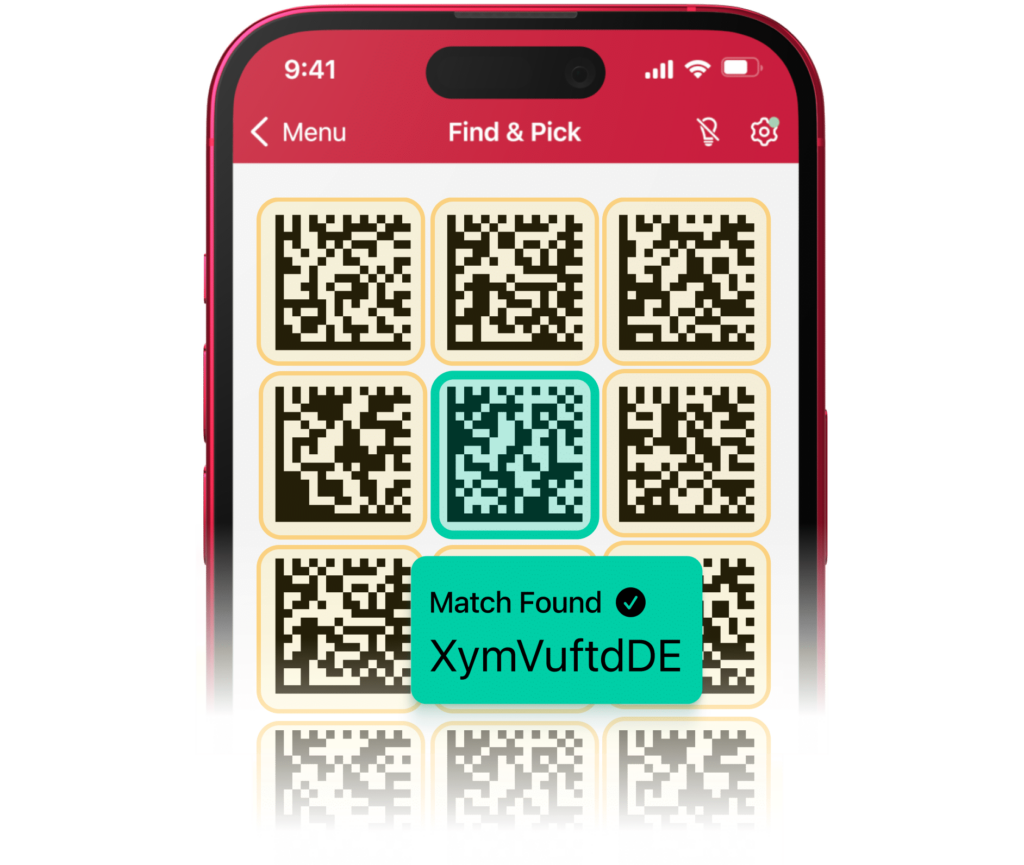Over the years, the Scanbot SDK has grown into a comprehensive scanning and data capture solution for mobile applications and websites.
Today, CEO Christoph Wagner shares insights into the key goal underlying Scanbot SDK’s product offering: transforming smartphones into cutting-edge multi-tools to boost the success of enterprises worldwide – and allowing employees and users to focus on their individual skills and creativity rather than repetitive paperwork.
Scanbot SDK’s solutions are emblematic of the tectonic shift from single-purpose devices to smartphones as multi-tools. Why do you consider the use of multi-purpose devices, such as smartphones or tablets, the leading approach to mobile scanning and data capture?
To answer this, let’s first look at the alternative. Without multi-purpose devices – and by this I mean a smartphone running apps – you would need a special device for every single task.
You’d have a separate document scanner device and a barcode scanner device. That is, if it wasn’t just some poor human manually digitizing information by typing it into database forms. You’d need to purchase these devices, maintain them, repair them, and replace them regularly. Often, you’d have a maintenance agreement with an external service provider. That’s a lot of expenses and overhead…
Now look at a smartphone: A single piece of hardware with a selection of intelligent apps can do all these tasks perfectly.
But the advantage of smartphones isn’t just that they can easily take over tasks you once needed expensive specialized hardware for. They offer entirely new kinds of functionality like Augmented Reality (AR) overlays, which can be used for “Find & Pick” or “Scan & Count”.
Find & Pick allows you to easily find an item with a specific barcode among various others. Thanks to our Barcode Scanner SDK’s AR features, that pre-defined barcode is highlighted right in the viewfinder.

The Scan & Count functionality is a real time saver as well. Imagine a shelf filled with barcoded boxes that you have to do an inventory of. You just point the camera at it, tap a button, and the SDK counts all barcodes in view.

The efficiency gain is a massive benefit, but it’s not the only one. Smart multi-tools let humans focus on their creative and problem-solving skills, where they can add way more value than by being a humanoid robot.
To be fair, specialized devices still have the advantage for some use cases. For example, if you’re trying to digitize a whole archive’s worth of paper, a document feed scanner is the better tool for this task. Doing this with a smartphone-based scanner is possible, but inefficient.
But these use cases are rapidly becoming less important. In most other situations, using smartphones is an excellent way of cutting costs while increasing operational efficiency.
Your products help businesses to eliminate time-consuming, error-prone, manual data collection processes. But what is the ultimate objective of Scanbot SDK? What other benefits can businesses expect besides efficient, inexpensive data capture?
First and foremost, our goal is to help businesses all across the world streamline their processes, whether internal or customer-facing. For organizations that use our software, the immediate results are lower costs and better operational efficiency.
Our larger vision here at Scanbot SDK, though, is to make life easier for millions of people. The point is to give them time to focus on more important matters than paperwork. We want to enable everyone to apply their creativity and skill to tasks where they make a difference instead of being hampered by mundane administrative work.
One great example of this is CARTI, a Kansas-based NGO. The organization provides cancer patients with extensive support and medical care.
With the Scanbot Document Scanner SDK inside CARTI’s mobile app, patients can now easily scan paper forms and submit them from the comfort of their homes instead of having to travel to the local offices. This makes a real difference in their lives – and it reduces the backend workload, giving CARTI’s employees more time to focus on providing the best possible care.
It’s rewarding to watch our work directly influence individuals worldwide, and it’s one of the driving forces behind my team’s efforts to enhance our solutions constantly.
Most SaaS companies offer their products under volume-based or “Pay per seat/device” licenses. Scanbot SDK approaches pricing differently, offering customers fixed annual licensing fees. Why are you opting for this unusual model?
This is what I like to call “SaaS with a twist.” Scanbot SDK is all about supporting our customers’ success. Hence, we don’t want to punish a business’s growth by increasing our fees. Which is what happens when you base pricing on volume variables like increased users, scans, or devices.
By not doing that, we consciously set ourselves apart from our competitors.
Our objective is to be a trustworthy partner from the start, and our pricing model reflects that. The flat fee gives existing and potential customers a reliable base they can scale from. Scanbot SDK allows enterprises to confidently enter new projects without worrying about the risk of committing to a volume-based contract and then having the costs skyrocket.
Additionally, fixed annual pricing lets us offer strong data privacy. Since we don’t need to track anything for billing, there is no need for the SDK to connect to our servers at all. It works entirely offline, which allows us to reduce attack vectors for external attacks and data leaks. This is a big plus in industries that handle highly sensitive data, like finance and insurance.
Now that we’ve heard about the benefits of Scanbot SDK’s fixed pricing model, could you outline the potential downsides? Why doesn’t this pricing model suit every use case and enterprise?
Volume pricing and fixed pricing models address distinct business needs. If a project can be reliably confined to a small enough number of users, devices, or scans, then volume-based licensing can be more cost-effective for an enterprise.
In most other cases, however, a flat license fee is the better option, especially where scanning needs are high, increasing, or unpredictable. With a fixed price, it does not matter how much the user base grows or how many devices are added.
Could you please describe how you approach support for potential and existing customers?
Ultimately, the Scanbot SDK is made for developers, and this shapes how we support both existing and potential customers. We offer direct dev-to-dev support via dedicated Slack or MS Teams channels, which means efficient communication and swift problem-fixing. Additionally, our experienced developer team maintains detailed documentation, example projects, and other resources.
Apart from the dev-to-dev support, every customer has a dedicated Customer Success Manager they can approach with any ideas, issues, or questions that come up.
As I said before, we want to help enterprises succeed, and enabling them to generate the most value from our solutions is a big part of that. Hence, our Customer Success team is constantly evaluating ways to improve our product offering through direct exchange with all our customers.
Your products are used to scan a lot of proprietary and confidential information. How do you ensure it stays secure and private while processing it?
Even before we started working on the SDK, we knew that data security and privacy had to be a major focus. That’s why we decided against connecting our customers’ devices to our servers.
This has two major advantages: First, as we have absolutely no access to the scanned data and as all data processing only happens directly on the device of the end users, we are never a data processor. This eliminates the need for additional data processing agreements.
Second, if a customer wants to use our solution completely offline, they can. They don’t need to worry about providing internet connectivity so that their devices can connect to our servers every once in a while just to validate their license.
We also protect the scanned data in other ways. The Document Scanner SDK enables our customers to upload scans to their databases immediately after they’ve captured them. For strong data security, we offer the option to encrypt the scans both at rest and in transit. Even if someone were to intercept the data, they wouldn’t be able to do anything with it without the respective encryption key.
Scanbot SDK’s solutions cover various use cases across industries, including Barcode Scanning, Document Scanning, and Data Extraction from complex documents. How do you and your team ensure that the SDK meets the constantly evolving needs of different industries with distinct requirements?
The short answer is: by active listening. This is one of the main jobs of the dedicated customer success manager we provide our clients with. Their CSM is not just their single point of contact, but also their voice in our company. So of course we don’t only talk to them about their experience with our solutions.
To stay up-to-date, our team also discusses evolving industry requirements and use cases with organizations. That information goes straight to our product team.
Our focus is staying in the loop regarding the latest digitization trends, changing needs, and the general demands of our customers from diverse industries. This way, we can constantly adapt our products to changes as they happen.
Lastly, could you tell us more about Scanbot SDK’s roadmap for 2023 and beyond?
Sure, let me share some of what you can expect to see soon.
The main goal for all Scanbot SDK solutions is to set the market standard – we want them to be the best available commercial solution for the problems we cover. We, therefore, focus heavily on improving our SDKs’ speed, accuracy, and reliability. These are our main product KPIs, as they align with our core company mission: making data capture as easy, accurate, and fast as possible. Additionally, we’re also working on reducing the size the SDK adds to an app, and on improving the camera startup time for the first scan.
The recently released version 1 of our new OCR engine is part of these performance upgrades. Version 2 will follow soon, bringing massive improvements in speed and accuracy.
We’re also updating our “ready-to-use” UI feature, making the provided screens much more customizable than before.
Finally, we are expanding to even more platforms: Following up on the Scanbot SDK for Windows, we will soon release a first public version of the Scanbot SDK for Linux. A Linux SDK opens an exciting new avenue for using the Scanbot SDK solutions in industrial environments. A promising use case is embedding the SDK into autonomous forklifts, which can then accurately identify the right pallet to pick by reading the barcodes with the help of the Scanbot Barcode Scanning SDK.



